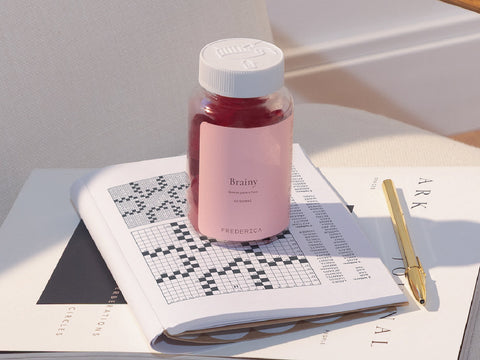What, for you, is happiness? Do you believe you can only achieve it if something external happens? Apparently, that's not how it works. Our evolutionary biology shows us that we are wired to thrive, as our brain presents a wellspring of chemicals that dictate the emotions we feel and the way we understand and experience life.
When we asked you the questions above, probably the first thing you thought about was material goods, people or experiences. And while these are key elements, in reality, happiness is fundamentally related to an internal chemical experience. There are four main chemicals that are recognized as being directly responsible for creating the emotions that allow us to feel happiness and fulfillment. In other words, it is not our external reality that generates this state of contentment, but rather a chemical expression generated in our brain. Isn't it fantastic?
How can we activate the action of the chemicals responsible for our happiness in our daily lives?
To activate and enhance the action of these chemicals in our body and, consequently, feel more happiness, there are several fundamental elements to be awakened. Get to know them below.
Serotonin: the happiness chemical
1. Exposure to sunlight;
2. Contact with Nature;
3. Foods rich in tryptophan;
4. Good intestinal functioning.
Serotonin is the most well-known happiness chemical because it is the one that antidepressant medications target. 95% of the body's serotonin supply is manufactured in the gut, so the well-being of our microbiome and overall gastrointestinal tract is vital to keeping our mood elevated.
Dopamine: the feel-good hormone
1. Manifestation of objectives;
2. Concentration;
3. Achievement of goals;
4. Foods rich in tyrosine.
Dopamine is responsible for reward-oriented behavior and pleasure seeking. To get a good dose of dopamine, set a goal and achieve it. The simple act of setting a goal with enthusiasm already activates dopamine receptors and carrying out the task itself also activates this system. Practicing acts of kindness towards others also increases levels of this hormone.
Endorphins: the molecule that relieves pain
1. Exercise practice;
2. Laughter;
3. Dance;
4. B complex vitamins.
Endorphins are produced by the central nervous system to help us deal with physical pain. The classic and best-known way to induce endorphins in the body is through exercise, such as laughter. These hormones are also responsible for masking pain and discomfort.
Oxytocin: the cuddle hormone
1. Union;
2. Excitement and touch;
3. Compassion and trust;
4. Amino acids.
You don't need another person to release oxytocin. Doing a self-massage or any other type of self-care ritual is a great way to produce this hormone; hug someone, hold hands and lovingly connect with your pets too. Produced in abundance during pregnancy and breastfeeding, oxytocin is primarily associated with loving touch and intimate relationships. It also stimulates dopamine and serotonin, while reducing anxiety.
Source: Anima Mundi Herbals Blog.
































